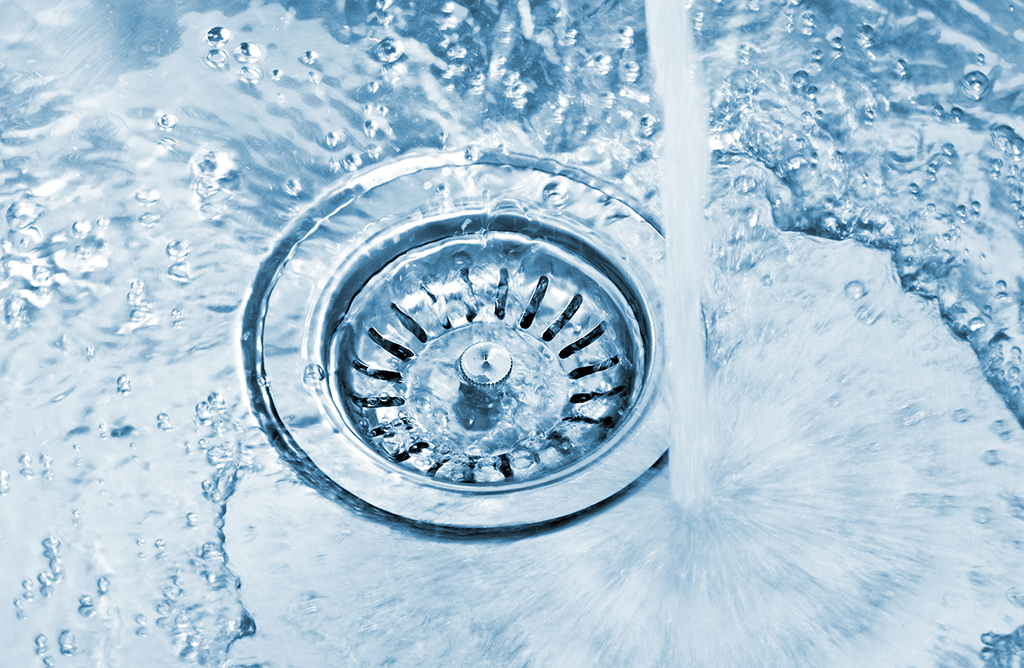How to Deep Clean a Drain
by siteadmin

Cleaning your drain isn’t something most people consider a regular chore, but it should be done regularly to prevent grime and blockages. A few simple steps are all you need to keep your sink drains clean and flowing properly.
Use baking soda and vinegar
Baking soda (sodium bicarbonate) is a household staple that can work wonders when it comes to cleaning your drains. It is able to dissolve minerals, organic materials and even grease that often build up and clog your drains. It also has slight disinfectant properties that can help combat odor-causing bacteria and fungus.
Vinegar is another common household item that can be used to clean your drains. Like baking soda, vinegar is an alkaline substance that can create a chemical reaction with a variety of substances. The result of this reaction is the production of carbon dioxide gas that can loosen and dislodge a lot of grime from your drains.
However, if your drain is severely clogged, this method may not be very effective. The fizzing reaction that occurs when baking soda and vinegar are combined is not strong enough to break down a large amount of debris or stubborn clogs. In most cases, this method is only effective for minor clogs and can be useful as a preventive measure against future blockages.
If your drain is fully clogged, you will need to use more drastic measures, such as using a snake or disassembling the drain trap to clear it out. It is important to regularly clean your drains to keep them running smoothly and to prevent blockages from forming in the first place.
If you have a partially clogged drain, try pouring half a cup of baking soda down the drain, followed by a quarter of a cup of white vinegar. Allow the mixture to sit for a few minutes and then flush it with hot water. If your drain is still clogged, you may need to repeat this process several times until it is completely free of debris and able to flow freely. Keeping your drains clean will not only prevent blockages, but it will also reduce the amount of germs and bacteria that can accumulate in your home’s pipes. This can improve your indoor air quality and keep you and your family healthy. Regularly cleaning your drains will also prevent foul odors and make your home a more pleasant place to live in.
Disconnect the drain
Adding deep cleaning your drains to your regular home maintenance checklist is an easy way to help prevent odors and keep your drains working efficiently. It may not be as exciting as scrubbing the top of your cupboards or dusting your kickboard plinths, but it’s just as important.
If you have a stinky drain, it’s probably due to an accumulation of organic matter like grease and soap scum. This sludge coats the inside of your drainpipe and traps hair and food particles, which can cause a slimy layer that emits unpleasant odors.
To clean your drain, remove the sink stopper and dispose of any gunk and debris you find underneath. Next, take a wire coat hanger and bend the end into a hook, then insert it into the drain. Once you feel resistance, twist the hanger to catch the clog on the hook and pull it up. This should remove the clog and allow water to flow freely. Repeat this process every two months to prevent odors and keep your drains running smoothly.
You can also use a barbed plastic drain cleaner to break up more stubborn clogs. These tools typically include a handle and a long, flexible cable that’s equipped with back-angled barbs designed to grab hair and other materials. To use this tool, remove the sink drain plug or stopper and slowly feed the snake into the drain opening. Once the clog is broken up, slowly pull the snake out of the drain and flush it with hot water to remove any remaining grime.
You can also clean your drain by pouring boiling water down the drain once a month. This can help loosen any food particles or fats that might be stuck in your pipes, preventing a stinky clog. If these quick drain cleaners don’t work, try using a bio-friendly drain cleaning product that releases natural enzymes into the pipeline to break down residue and odors without using harsh chemicals. This product can be purchased at most hardware and grocery stores. Be sure to follow the instructions on the packaging and test it with a small amount of water before applying it to your entire drain system.
Use a snake or drain auger
A drain snake or auger is a tool used to remove obstructions from household drains. It consists of a long cable with an auger (which looks like an uncoiled spring, corkscrew or drill bit) at one end and a crank handle. The professional drain augers plumbers use are more powerful than the ones available to homeowners and can extend further down the pipe.
Start by locating the clogged drain. Then, insert the end of the snake or auger into the clogged pipe and crank it to feed it down the pipe. The clog may be located deeper down in the drain or it may be located near the opening of the drain. If you have trouble finding the clog, try using a plunger and then feeding the snake again.
The clog may be made up of a variety of materials, such as: cooking grease, hair, soap scum, or even toys and clothing that have been flushed down the toilet. A plumbing snake can easily pick up these materials and break them up so that they are able to be pulled out of the drain without causing any damage to the pipes or other parts of the house.
Once you feel that the end of the snake or auger has reached the clog, pull it back up and disconnect it. Afterward, reassemble the pipe and flush it with hot water to make sure that all of the debris has been removed.
It is important to clean your drains on a regular basis to avoid blockages and other issues. If you can't clear a clog using a snake or if your drains are constantly blocked, it is time to call in the Philadelphia Drain Cleaners.
Flush with hot water
Adding drain cleaning to your home’s regular maintenance routine is an easy way to keep your drains smelling fresh, flowing smoothly, and clog free. Baking soda (sodium bicarbonate) and vinegar are inexpensive household cleaning products that can remove stubborn clogs without the risk of damaging your pipes. They also provide a natural alternative to chemical drain cleaners that are harmful to the environment and your health.
Start by removing any sink pop-up stoppers or tub/shower drain covers to gain access to the drain opening. Then, heat up a pot of boiling water. Pour the water down the drain in several stages, waiting a few seconds between each pour to allow the hot water to work its way down the pipe. This will help loosen up any hair, soap scum, or other gunk that may be blocking the pipe.
Once the hot water has poured down the drain, use a plunger or other similar tool to scrub away any remaining gunk on the interior of the pipe. If the gunk seems to have stuck in the pipe’s opening, try using a wire or bent metal rod to dislodge it. After a few tries, if the drain is still blocked, it’s time to call a plumber. This is usually a sign of a more serious problem such as years of grease buildup or tree roots that are blocking the drain’s opening.
After you’ve cleaned the drain with baking soda and vinegar, it’s a good idea to flush your pipes with hot water again. To do this, pour one cup of baking soda down the drain, followed by a cup of distilled white vinegar. The mixture will fizz and bubble, so cover the drain opening if possible to avoid spills. Allow the solution to sit for an hour, or overnight if necessary. Then, pour a pot of hot water down the drain to flush away any remaining baking soda and vinegar.
Aside from regular cleaning, the best way to keep your drains in great shape is to prevent them from getting clogged to begin with. To do this, be mindful of what you put down the drains, and use a sink strainer to catch any large items that might block the pipe. You can also use a microbial drain cleaner to reduce the amount of grease and organic material that is deposited in your drains.
Cleaning your drain isn’t something most people consider a regular chore, but it should be done regularly to prevent grime and blockages. A few simple steps are all you need to keep your sink drains clean and flowing properly. Use baking soda and vinegar Baking soda (sodium bicarbonate) is a household staple that can work…
Recent Posts
- Expert Heating, Cooling, And Plumbing Services At Hubbard Mechanical
- the Ultimate Choice Among Plumbing Contractors in Lorain, Ohio
- Local Plumbers Redefine Standards with Unmatched Expertise and Community Commitment
- Septic Tank Armadale Revolutionizes Septic Tank Services and Introduces Innovative Used Cooking Oil Collection
- Got Flow Plumbing & AC: Plumbing, Drain Cleaning and Hydro Jetting across the Greater Houston
